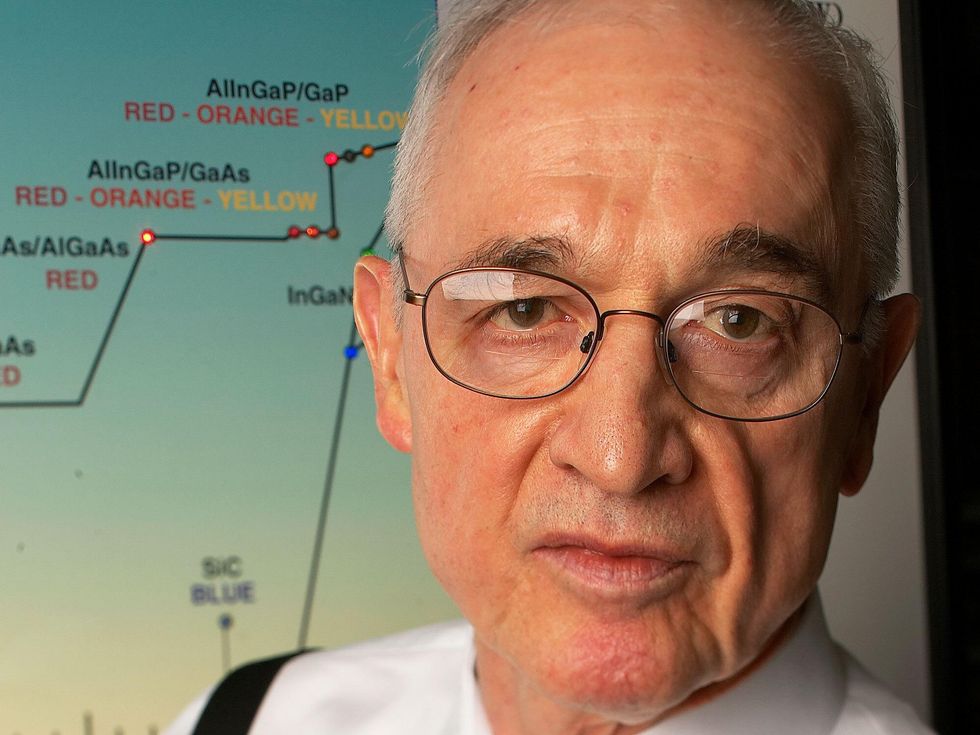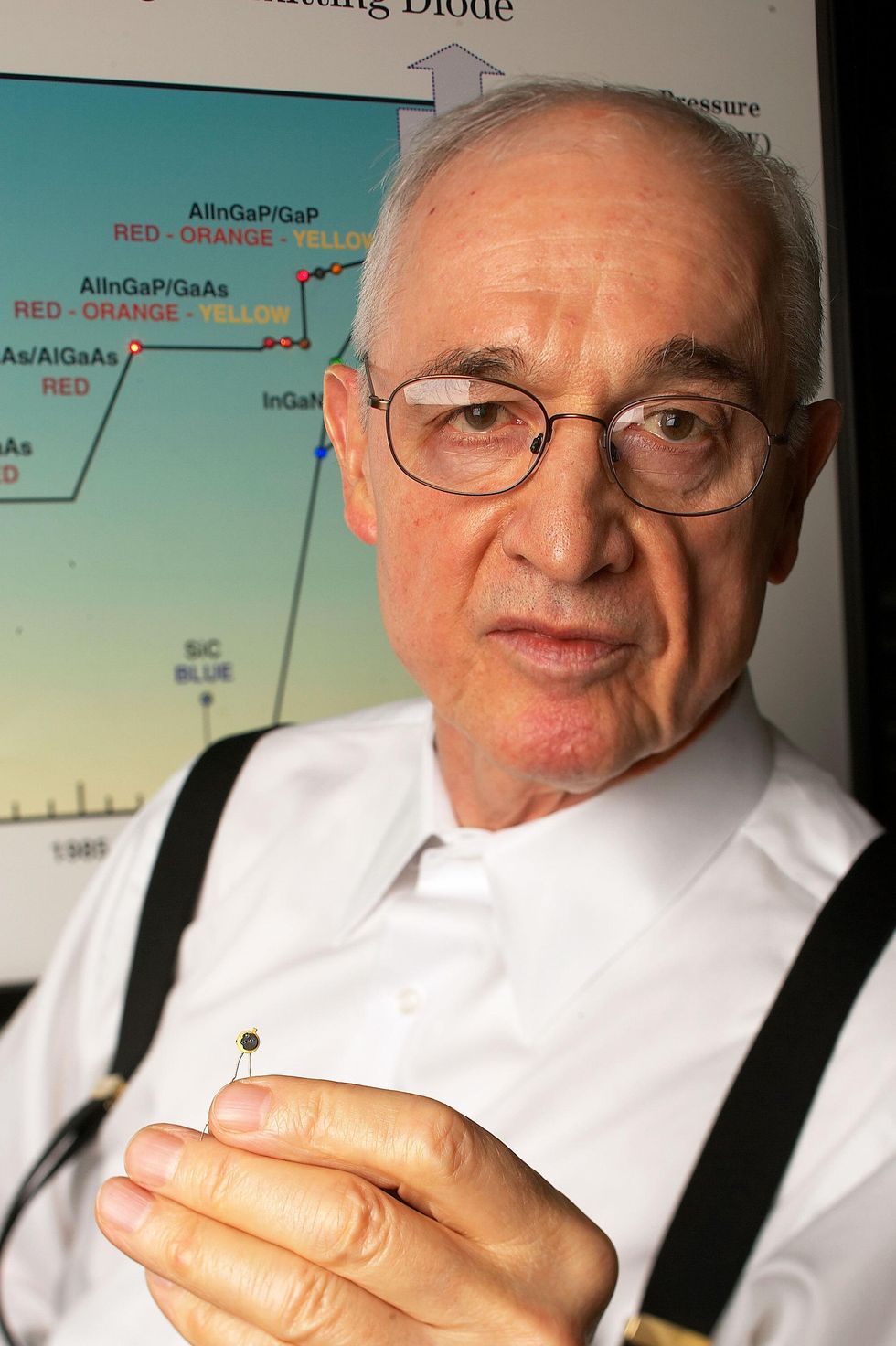

 Nick Holonyak, Jr. holds a part of a stoplight that utilizes a newer LED designed by his students. Ralf-Finn Hestoft/Getty Images
Nick Holonyak, Jr. holds a part of a stoplight that utilizes a newer LED designed by his students. Ralf-Finn Hestoft/Getty Images
Nick Holonyak Jr., a prolific inventor and longtime professor of electrical engineering and computing, died on 17 September at the age of 93. In 1962, while working as a consulting scientist at General Electric’s Advanced Semiconductor Laboratory, he invented the first practical visible-spectrum LED. It is now used in light bulbs and lasers.
Holonyak left GE in 1963 to become a professor of electrical and computer engineering and researcher at his alma mater, the University of Illinois Urbana-Champaign. He retired from the university in 2013.
He received the 2003 IEEE Medal of Honor for “a career of pioneering contributions to semiconductors, including the growth of semiconductor alloys and heterojunctions, and to visible light-emitting diodes and injection lasers.”
LED and other semiconductor industry breakthroughs
After Holonyak earned bachelor’s, master’s, and doctoral degrees in electrical engineering from the University of Illinois, he was hired in 1954 as a researcher at Bell Labs, in Murray Hill, N.J. There he investigated silicon-based electronic devices.
He left in 1955 to serve in the U.S. Army Signal Corps, and was stationed at Fort Monmouth, N.J., and Yokohama, Japan. After being discharged in 1957, he joined GE’s Advanced Semiconductor Laboratory, in Syracuse, N.Y.
While at the lab, he invented a shorted emitter thyristor device. The four-layered semiconductor is now found in light dimmers and power tools. In 1962 he invented the red-light semiconductor laser, known as a laser diode, which now is found in cellphones as well as CD and DVD players.
Later that year, he demonstrated the first visible LED—a semiconductor source that emits light when current flows through it. LEDs previously had been made of gallium arsenide. He created crystals of gallium arsenide phosphide to make LEDs that would emit visible, red light. His work led to the development of the high-brightness, high-efficiency white LEDs that are found in a wide range of applications today, including smartphones, televisions, headlights, traffic signals, and aviation.
Pioneering research at the University of Illinois
Holonyak left GE in 1963 and joined the University of Illinois as a professor of electrical and computer engineering.
In 1977 he and his doctoral students demonstrated the first quantum well laser, which later found applications in fiber optics, CD and DVD players, and medical diagnostic tools.
The university named him an endowed-chair professor of electrical and computer engineering and physics in 1993. The position was named for John Bardeen, an honorary IEEE member who had received two Nobel Prizes in Physics as well as the 1971 IEEE Medal of Honor. Bardeen was Holonyak’s professor in graduate school. The two men collaborated on research projects until Bardeen’s death in 1991.
Together with IEEE Life Fellow Milton Feng, Holonyak led the university’s transistor laser research center, which was funded by the U.S. Defense Advanced Research Projects Agency. There they developed transistor lasers that had both light and electric outputs. The innovation enabled high-speed communications technologies.
More recently, Holonyak developed a technique to bend light within gallium arsenide chips, allowing them to transmit information by light rather than electricity.
He supervised more than 60 graduate students, many of whom went on to become leaders in the electronics field.
Queen Elizabeth prize, Draper prize, and other awards
Holonyak received last year’s Queen Elizabeth Prize for Engineering; the National Academy of Engineering’s 2015 Draper Prize; the 2005 Japan Prize; and the 1989 IEEE Edison Medal. In 2008 he was inducted to the National Inventors Hall of Fame, in Akron, Ohio.
He was a fellow of the American Academy of Arts and Sciences, the American Physical Society, and Optica. He was also a foreign member of the Russian Academy of Sciences. In addition Holonyak was a member of the U.S. Academies of Engineering and Sciences.
Read the full story about Holonyak’s LED breakthrough in IEEE Spectrum.
Reference: https://ift.tt/mSYTxXL
No comments:
Post a Comment